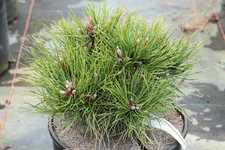Anhosustali
Seedling
- Messages
- 14
- Reaction score
- 1
Here is the list of questions there is a lot and I don't expect all to be answered, but I hope to eventually figure them out. Anything helps!
-1- In grafting a witches broom (WB), can you graft a large branch, or can I expect to only be successful with a small cutting? (I remember seeing a video of some guys who used shotguns to shoot down WB and graft them later.)
-2- What Genera exhibit genetic WB? Are there some Genera that will never exhibit WB? Is there an online list that someone has compiled?
-3- How can you tell genetic WB? Are there ways you can tell from afar? (I have spent most of my life wandering wilderness areas, I believe I have found 4 genetic WB (Pinus sylvestris, Abies concolor, an unknown pinyon-juniper, Quercus gambelii) but I would like to know if it is worth hiking up my climbing equipment to make attempt at it. I see the temptation to use a shotgun)
-4- Is it advisable to air layer instead? I am in Utah, so I am concerned about freezing developed roots in a tourniquet method.
-5- When grafting should I maintain general rules of species mixing? or because of new genetic differences is it important to maintain the species for root stock?
-6- I know this sounds awful but is there any research out there about the chemicals or processes that cause WB non-genetically, and would it be possible to apply it to the tree? Essentially forced stress.
-1- In grafting a witches broom (WB), can you graft a large branch, or can I expect to only be successful with a small cutting? (I remember seeing a video of some guys who used shotguns to shoot down WB and graft them later.)
-2- What Genera exhibit genetic WB? Are there some Genera that will never exhibit WB? Is there an online list that someone has compiled?
-3- How can you tell genetic WB? Are there ways you can tell from afar? (I have spent most of my life wandering wilderness areas, I believe I have found 4 genetic WB (Pinus sylvestris, Abies concolor, an unknown pinyon-juniper, Quercus gambelii) but I would like to know if it is worth hiking up my climbing equipment to make attempt at it. I see the temptation to use a shotgun)
-4- Is it advisable to air layer instead? I am in Utah, so I am concerned about freezing developed roots in a tourniquet method.
-5- When grafting should I maintain general rules of species mixing? or because of new genetic differences is it important to maintain the species for root stock?
-6- I know this sounds awful but is there any research out there about the chemicals or processes that cause WB non-genetically, and would it be possible to apply it to the tree? Essentially forced stress.


